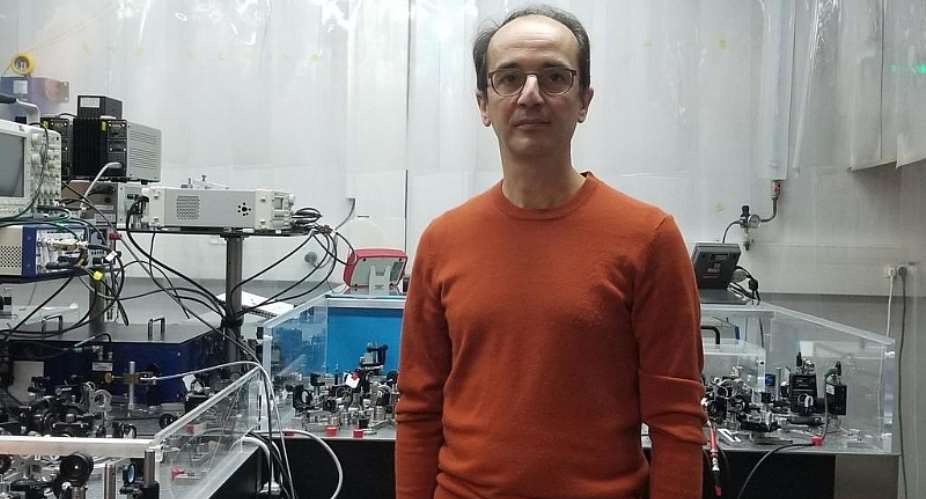A team of researchers in Paris is conducting an experiment that uses photons, or particles of light, to process quantum information – a key step for building quantum computing systems.
At the Kastler Brossel Laboratory in Paris's Sorbonne University, Professor Nicolas Treps and his team are making final adjustments to the apparatus before firing up a laser.
Their experimental set up consists of a complex formation of lenses and mirrors that guide the laser beam in such a way that at the end of its path, a highly sensitive detector is able to isolate a single particle of light or photon.
Given that one of the approaches in quantum computing is to encode information in individual photons, the detection of photons is an important step in the development of quantum systems.
Quantum technology involves using some of the key principles of quantum mechanics, the branch of physics that describes the behavior of matter and light on a sub-atomic scale. For example, unlike classical computing where the units of information called bits can exist as either 0 or 1, in quantum systems, the two units of information called qubits can be simultaneously present, a situation which adds to the speed and flexibility of processing.
“Our experiment is directly linked to both quantum metrology . . . which means improving measurements . . . and to quantum computing, which means improving the power of calculations,” Treps says.
He explains that extracting individual photons from a beam of light is like trying to extract a single rain drop during a downpour. “There is noise associated with raindrops. Similarly, photons too generate 'noise'. What we are doing here is to reduce the 'noise' of the photons, which is linked to quantum metrology and to extract one photon for processing information in quantum computing.”
The Kastler Brossel laboratory is one of the world's leading institutes involved in cutting-edge research on quantum technologies. The lab also specialises in building complex, state-of-the-art tools such as detectors for advancing such experiments.
“This is a tradition of the Kastler Brossel Laboratory. We endeavour to bring new fundamental concepts in physics to the experimental stage. In order to do that we need to build apparatus that did not exist before. This is a tradition of physics. To make progress, you need better systems,” Treps says.





 We’ll no longer tolerate your empty, unwarranted attacks – TUC blasts Prof Adei
We’ll no longer tolerate your empty, unwarranted attacks – TUC blasts Prof Adei
 Bawumia donates GHc200,000 to support Madina fire victims
Bawumia donates GHc200,000 to support Madina fire victims
 IMF to disburse US$360million third tranche to Ghana without creditors MoU
IMF to disburse US$360million third tranche to Ghana without creditors MoU
 Truck owner share insights into train collision incident
Truck owner share insights into train collision incident
 Paramount chief of Bassare Traditional Area passes on
Paramount chief of Bassare Traditional Area passes on
 Two teachers in court over alleged illegal possession of BECE papers
Two teachers in court over alleged illegal possession of BECE papers
 Sunyani: Victim allegedly shot by traditional warriors appeals for justice
Sunyani: Victim allegedly shot by traditional warriors appeals for justice
 Mahama vows to scrap teacher licensure exams, review Free SHS policy
Mahama vows to scrap teacher licensure exams, review Free SHS policy
 Government will replace burnt Madina shops with a new three-story, 120-store fac...
Government will replace burnt Madina shops with a new three-story, 120-store fac...
